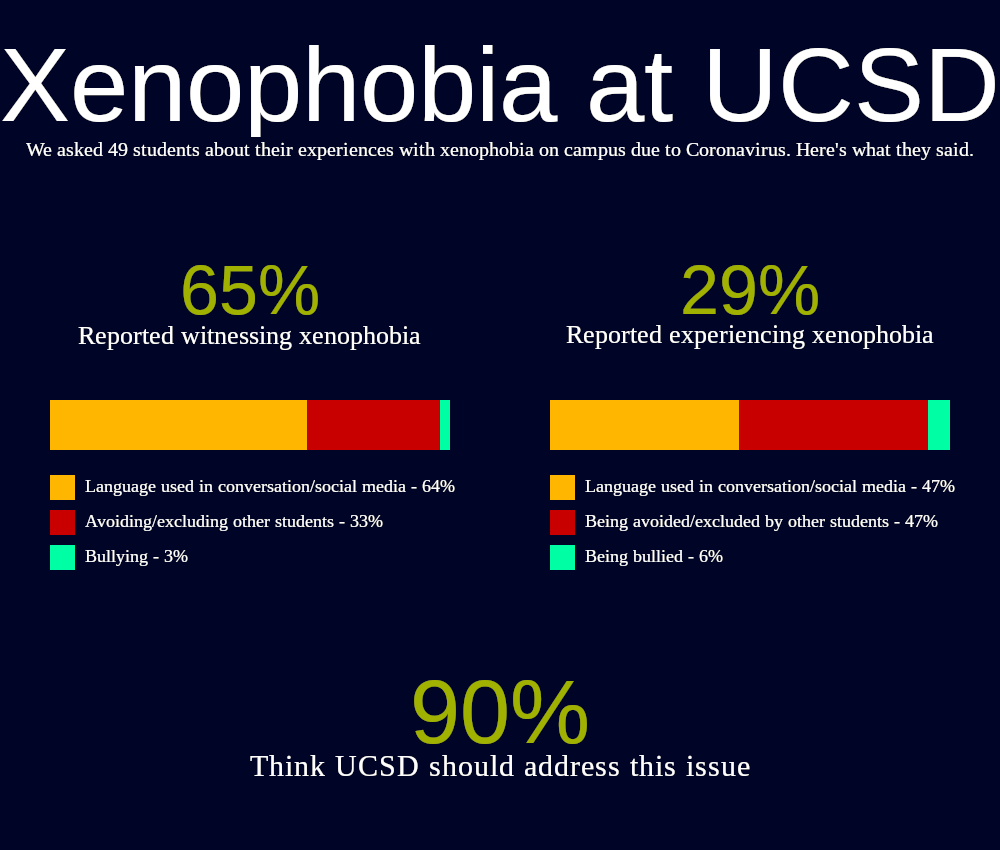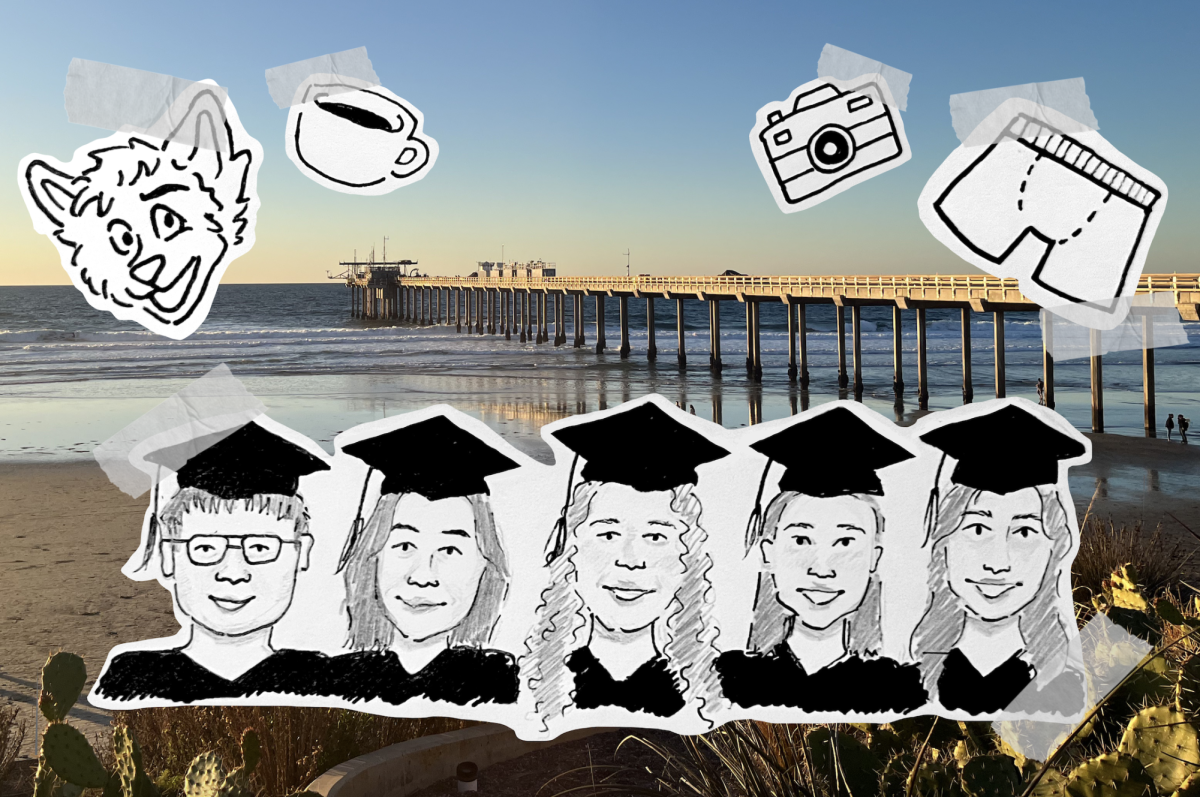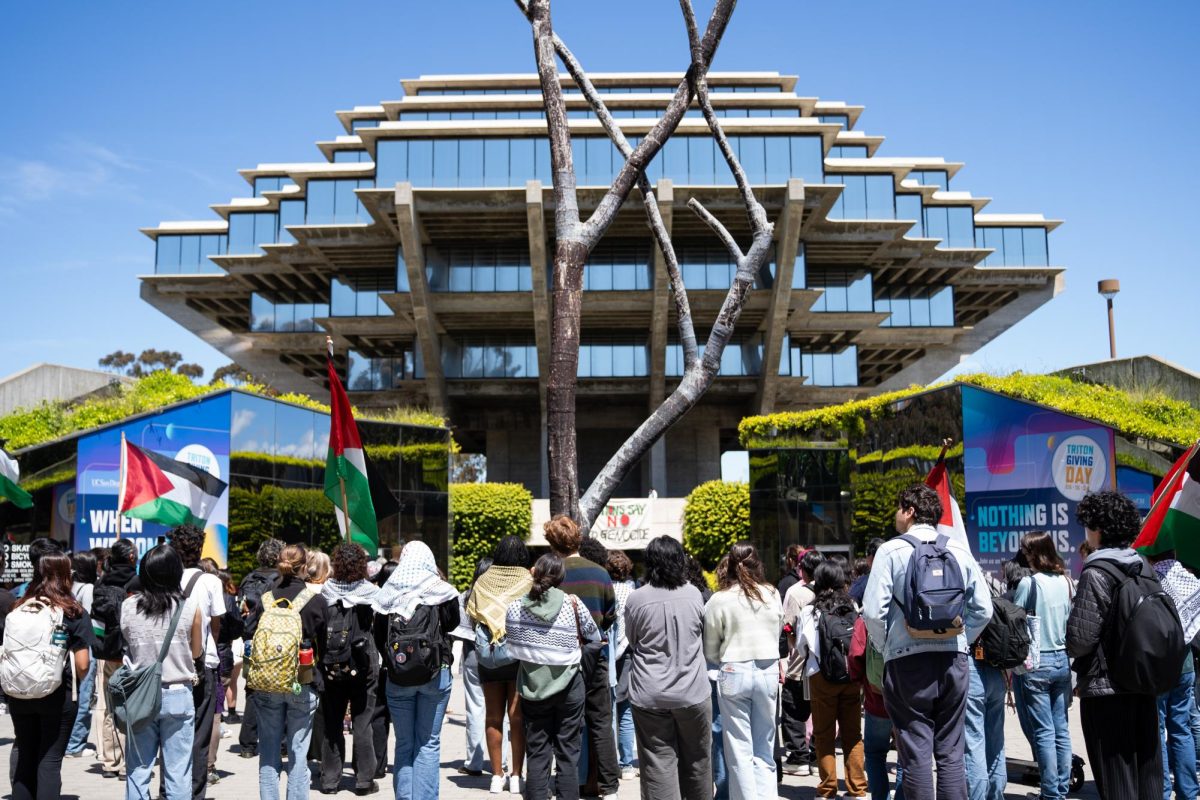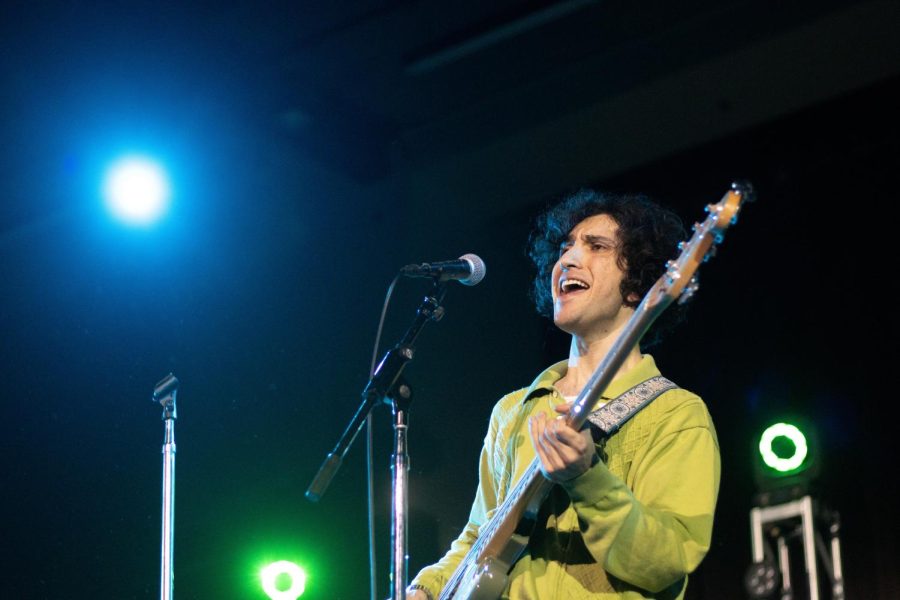The coronavirus epidemic has been a major driver of fear. But something other than the fear of the virus has been spreading — a fear of Asian people, and particularly Chinese people. In Chinatown, Sydney, a Chinese man passed away after he collapsed and bystanders “refused to give CPR over coronavirus fears”. Ever since the first confirmed cases of the coronavirus in the US, the outbreak has exposed xenophobia towards Chinese people, particularly the idea that they may carry the virus regardless of the statistical unlikeliness of that happening. These kinds of xenophobic attitudes are also prevalent on the UC San Diego campus. In a poll conducted by the UCSD Guardian, we found that more than 70 percent of respondents had at least witnessed a form of xenophobia since the outbreak, such as refusing to meet with Chinese people. Such negative responses surrounding the viral outbreak are not only immoral, but also damaging for the campus community as a whole.
The current division between the international and U.S. resident population, which is common on U.S. campuses due to cultural and language barriers, makes it difficult for American students to potentially see the impacts of their actions, intentional or not, on those who are personally affected by a major humanitarian crisis. While impacts on a personal level will vary from person to person, one major impact is clearly visible — the responses surrounding the coronavirus will deepen the already existing divide between the international student community and the general student population.
According to a study published in 2015, cultural and language barriers created the isolation of Chinese international students that exists today. This isolation harms both the international community and the general student body. International students can provide greater diversity in classrooms, and a perspective in classes that many American students may not have. But the division of these two student groups negate the assets that international students can bring — ultimately depriving ourselves of these useful and relevant perspectives. And for the international student community, the isolation that international students can face will deprive them of our perspectives while also forcing them to face the realities of being relegated as an obscure community on campus.

Xenophobic responses, as well as jokes that play into irrational fears of Chinese students, will deepen this division on campus. Insensitive jokes about the outbreak, such as those on UCSD’s own meme page, can be funny to some, however they can hit very personal nerves for others. The jokes make light of a situation that may be quite literally a fear of death of loved ones, and the offense that follows will do nothing but further isolate the international Chinese student community. Overtly xenophobic and racist attitudes will have even worse effects. They will and do create racial enmities on campus that no one needs — and turn the isolation that international students face into bigotry.
The administration’s responses to the outbreak have not been perfect, but frequent communication between the administration and students through emails and workshops are a step in the right direction. The key to managing the virus and the negative responses that follow is transparency and communication, something that the administration has seemingly taken to heart. In order to address the xenophobic attitudes towards international students, the administration should also focus on addressing the isolation of international students that allowed xenophobic attitudes to develop and propagate.
It is important to keep in mind that the division between the international community and the rest of the student population is not inherently permanent. While joking about the coronavirus does not define someone as xenophobic, such jokes can sow further division between the two communities. While the administration of the university undoubtedly has a responsibility to help bridge this divide, this bridge building must first occur on a personal level. Greater communication and the mindfulness of the impacts of one’s actions, for both sides of the campus, may be able to bridge the divide that exists today.
Art by Alex Liang of the UCSD Guardian Art Department.




















William • Mar 2, 2020 at 6:13 am
Dear Sean Kim,
While your comments do seem well-intentioned I should be quick to remind you that East Asians are well known for their xenophobia and racism towards people who are not East Asian. As a result, you should not be the person to tell us about the dangers of xenophobic and racist beliefs as a Korean-American person since your people are well known for their pro-Korean xenophobia and racist beliefs towards Non-Korean people!